The Vikings came out of the frozen lands of northern Europe – Norway, Iceland, Denmark and Sweden – seeking wealth and conflict. Theirs was a society of rugged and enduring men and women, who revered bloody-handed gods and valued courage and action above all other virtues. For two hundred years, they traded and pillaged across the coasts of England, France and other European countries, demanding tribute, sacking towns and monasteries but also engaging in settlement and commerce. Like giants they strode across history, their axe-wielding beserkers and canny explorers performing feats of bravery and prowess. The golden age of the Viking was between 850 and 1050 AD, when men of iron, free men, strong and proud, would take to the sea when the ice had left the fjords. Those who faltered went down to Hel’s hall, so said the Norse myths, but those who found success were destined to take a place in Valhalla to fight beside the gods at Ragnarok – the final battle at the end of the world. Whilst the days of terrible gods and seafaring warriors are now gone, a few still remember the old ways and the superstitions of the Vikings remain alive among their Scandinavian descendants. As it says in the Havamal, or Book of Viking Wisdom, ‘Cattle die, kinsmen die, but fame is everlasting’.
Up Helly Aa, the largest fire festival in Europe, has been celebrated as an end to the old Yule season in Shetland for over 100 years, though its exact origins are obscure. On the last Tuesday of January, the little town of Lerwick, located in the remote Shetland Islands in the far north of Scotland, goes more than a little mad. Up Helly Aa is a superb spectacle involving fifty horn-helmeted Vikings, a burning Norse galley and an all night party. However, it is much more than just a sub-arctic bonfire and booze-up – it’s a celebration of Shetland history and a triumphant demonstration of the islanders’ skills and spirit. The current Lerwick celebration grew out of the older Yule tradition of tar barrelling which took place at Christmas and New Year, when squads of young men would drag barrels of burning tar through town on sledges, making mischief. The Viking theme was only officially introduced into the festival in the 1880s but there are suggestions that in doing so it was only holding true to a much older tradition, dating back almost a thousand years to when the islands were occupied by fierce invaders from out of the frozen north. Whilst Up Helly Aa is at heart a fun celebration of Viking traditions (it’s sometimes called ‘Transvestite Tuesday’ because of the large quantity of males dressing up as females who take part!), there are other much darker trappings of Norse mythology which are alive today.
Spae-craft is the term usually used to describe black or hostile magic in Norse saga. While it almost always has dark connotations, this isn’t always the case. Seither is a generic term for a hedge-witch and many of them, also called Spae-wives, appear as positive characters in song and saga. On the other hand, Seither were often feared as formidable black magicians, and were thought to consort intimately with trolls and a variety of other unpleasant creatures. Seithir involved the incantation of spells, which could amongst other things be termed galdrar or galðrar and its practitioners in antiquity were predominantly female. There have always been male Seithir practitioners but in the Viking age, Seithir had connotations of ‘unmanliness’ or ‘effeminacy’ for men, as its manipulative aspects ran counter to the (then) male ideal of forthright, open behaviour. The dark magic of Spae-workers took many forms. It could be subtle in the form of curses bringing crop failure, disease among livestock, wasting illnesses and plague. The most powerful Seither in the sagas were said to have formidable magics at their disposal, and many are the heroes laid low through the machinations of wicked spae-work. A true sorcerer could change his skin, conjure up trolls or call them out of the forests and mountains, call forth the unhallowed dead, converse with evil spirits, ensnare the minds of men or work a variety of other unpleasantness.
To the Vikings, writing – indeed the very act of setting down wisdom that may be used later – was mystical. By understanding symbols, it was thought that one could glean insight into the past and the future. With the power of writing, the properly trained could read and learn what the ignorant could not – what could be more magical? Runes, the symbols of Norse language, were therefore more than just letters to the Vikings. They were portents, signs and holders of mystic power. A rune could be a sound, but the very nature of the rune as a symbol meant that it could be much more as well. By making runes, one drew a connection between the rune and the marked object; this meant that the rune associated its power with the subject. Thus, naming a drinking horn or a spear gave it a legendary character, but carving runes upon such a device could invest it with true power. Of course, since the Norsemen lived in a society of sacrifices and painful existence, runes were no exception to this formula. Discovery of the runes and their power was a taxing ordeal, not a simple learning process. The god Odin did not himself learn of the runes until, according to legend, he pinned himself to a tree for nine days with his own spear, finally gleaning insight through the pain of sacrifice. To men, the runes came in visions, whispers of godly wisdom or through harsh learning. Any man could scratch a few runes on a table with a knife, leaving a name or a scrawl; the true strength of the runes, the inward impressions that draw rune and power together, are the province of the learned few who risk life and sanity for them.
Ghosts, monsters and even the living dead also played a prominent role in Norse mythology. A Draug, also known as aptrgangr (literally “again-walker”, or “one who walks after death”) is an undead creature that was believed to live in the graves of the dead. As the graves of important men often contained a good amount of wealth, the Draug jealously guarded his treasures, even after death. Draugs were said to possess superhuman strength, could increase their size at will and carried the unmistakable stench of decay. They were undead Vikings who retained some semblance of intelligence and who delighted in the suffering that they caused. In stark contrast to Draugs were the more noble ghosts known as Einherjar. These were the heroic dead of Norse mythology, who were gathered from the battlefields by Odin’s handmaidens, the Valkyries and taken to Valhalla in waiting for the final battle at the twilight of the gods. Viking legends also spoke of Vargr, who were sometimes thought of as bloodthirsty outlaws, demonic wolves or shape-changing werewolves. In particular the term referred to the wolf Fenrir and his sons Sköll and Hati, who had been bound in chains at the dawn of time but were prophesied to escape to plague the world in time for Ragnarok. In their time the fearsome Vikings and their blood-soaked myths caused all of Christendom to tremble at their approach. Though the Vikings may now be consigned to history, the legends they spawned have outlived their culture for hundreds of years and may indeed prove to be ‘everlasting’.


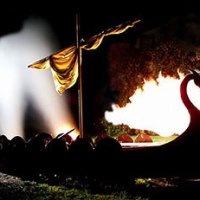



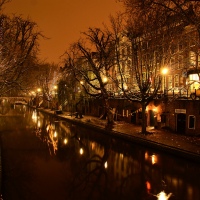



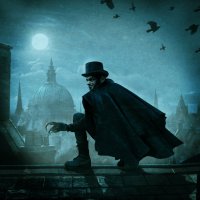

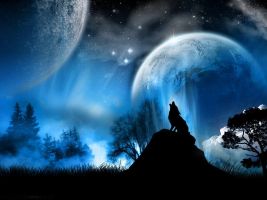

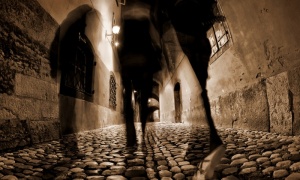


Very nice 😀
Interesting read. I had read somewhere that in a sort of peace treaty, or settlement, the vikings were allowed to take control of what we later came to know as Normandy. Later these ‘settled’ vikings went on to claim and invade all of England via William the Conqueror. The interesting thing for me is that much of the bloodline of the Modern British is apparently far more Germanic rather than of Scandinavian (with the exception of North Eastern England) or French descent, of course mixed with Angles. Am I far off the mark?
Yes, you’re on the right track
Followed a train of thought (Skyrim on the brain) and stumbled upon your article. Thank you very much for this! =)
Reblogged this on Emily Littler Novels and commented:
Quite an iteresting insight on the belifs of the Vikings
A useful article. I was looking for something about Vikings and Demons for my recent book, and came across this. It’s just the information I need to continue.